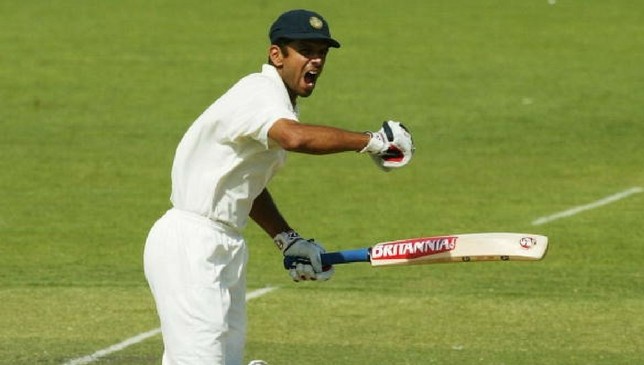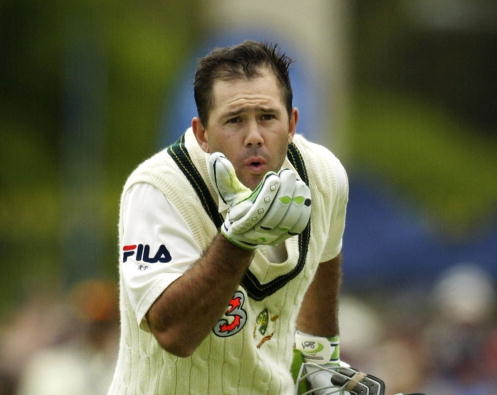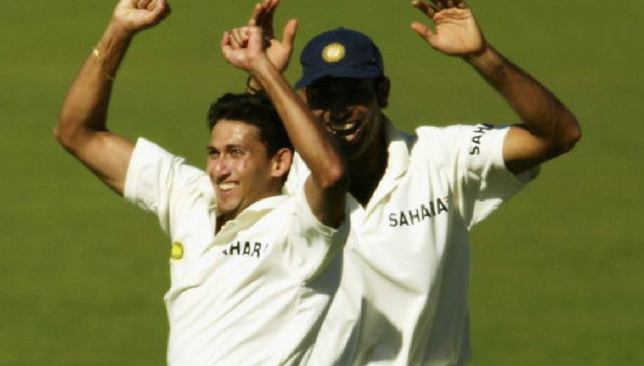
In sport, some crumble in the face of pressure, while others take to tasks with positive excitement.
Spontaneous moments in cricket are some of the most authentic, yet it is truly a delight when years of steady improvement produce tangible results. They feel more earned, more satisfying.
It has been exactly thirteen years since India travelled to Australia and, after a draw in the first Test, drew first blood against the world’s best side on their own patch in the second. Following India’s previous visit to Australia had ended in a miserable 3-0 whitewash, the away side had undergone an identity shift.
Several new players were unearthed and integrated into the side as India began to win Test matches away from home with greater regularity than ever before.
Adelaide has entered Indian cricket history as the venue of one of its most significant modern victories; the visitors’ first win Down Under since 1981 entertained, for two weeks at least, the giddy possibility of toppling the world champions in a series in their backyard for the first time ever.
BACKGROUND
The two sides had met in the 2003 World Cup final nine months earlier and that had been an Aussie rout. Defeat in a World Cup final had taught a generation of Indian cricket fans the meaning of sporting disappointment the hard way.
Despite the general improvement abroad, the visitors’ recent form had been scratchy. They had won just one of their previous five Test series and collapsed to defeats in New Zealand and the West Indies. Their most recent series had been at home to the Kiwis – a 0-0 draw.
Unlike the previous two series where India had been successful Down Under – in 1981 and 1977-78 – Australia were this time neither in poor form nor, by and large, missing key players. The home side had won a staggering eight of their last nine Test series.
Indeed, one would have to go back to the two sides’ previous meeting for Australia’s last defeat in a Test series – a historic 2-1 result to India in February-March 2001, where the heroics of Harbhajan Singh, VVS Laxman and Rahul Dravid had ensured a dramatic turnaround in the series.
The two sides first squared off on December 4, 2003 at the Gabba.
Despite the rain, Ganguly, Justin Langer and Matthew Hayden scored some early brownie points for their batting. The game was declared closed at 5:10 PM on the fifth day and India, arguably, had done well to avoid defeat in the first game – something that had occurred in four of their last five away series.
It was in this landscape that began the second Test at the Adelaide Oval on 12 December 2003 in front of 20,048 spectators. For the Indians, bowlers Anil Kumble and the debutant Irfan Pathan were the two changes to the side from the first Test.
The Australian attack, on the other hand, was deprived of Shane Warne [ban] and Glenn McGrath [ankle injury]. Nathan Bracken, a debutant at Brisbane, was replaced by Brad Williams in the home side’s only change.
The Aussies won the toss and chose to bat.
THE PONTING PLUNDER
Australia’s batting, unlike their bowling, was, however, at full strength, and this fact become abundantly clear on a whirlwind first day. On a batting-friendly wicket, Australia smashed their way to 135-2 by lunch.
The first fifty came up in nearly as many minutes as Langer marched to a half-century of his own from 64 balls. Hayden fell early this time, but his replacement Ricky Ponting quickly set about demonstrating his venom.

At times, it must have felt like the nightmarish revisit of Johannesburg. Choking the offside with fielders did little good for the Indians; Ponting reached his century in just 117 balls, his first 16 boundaries coming through the well-staffed offside.
Most of the other batsmen were unable to build on solid – and, it must be said, rapidly accumulated – starts, but Ponting and Simon Katich were able to add 138 runs for the fifth wicket in what proved to be game’s second-most successful partnership.
By the close of the first day, with Ponting still batting on 176, the Aussies had piled up a quite astonishing 400 runs at 4.44 an over – a record for any one day at the Adelaide Oval.
The following morning, the home side picked up from where they had left off. Ponting blasted his way to an eventual score of 242, compiled over nearly eight-and-a-half hours and with 31 fours, before being dismissed by Kumble.
The bowler also claimed the wickets of Williams and Stuart MacGill in the same over to close the Australian innings at 556 on the second afternoon.
A SPOT OF BOTHER
For their part, India responded well. When the first wicket fell, the tourists had posted 66 runs from the first 12 overs.
They had reached their first fifty in 9.4 overs. But here is where disaster struck, and ironically brought together the two who would rally their team’s cause against Australia for the second time in under four years.
Andy Bichel removed Virender Sehwag and Sachin Tendulkar within four overs of each other, before skipper Ganguly was run-out cheaply. The pressure was mounting and India were in desperate trouble at 85-4, staring at a 471-run deficit when Laxman joined Dravid at the crease.
Perhaps the word ‘Kolkata’ was thrown around by some when the two set about wresting the game and the psychological advantage from the Australians’ grip, but more likely than not, for those who called upon the memories of the famous comeback, it was a word used more in hope than expectation, with the air of dogma and defiance rather than confidence and self-belief.
The repair of the damage began at a brisk enough pace. Going at nearly three-and-a-half runs an over, India were 180-4 by stumps on day two, Laxman unbeaten on 55 and Dravid not far from his own half-century.
By the time the two were separated, at tea on the third day, the score had advanced to 388, the fifth-wicket stand worth 303 to the Indians. Laxman had struck 18 fours in his 148, stroking the ball through the offside with ease, before being caught behind off Bichel.
Slowly, gradually, the game was turning as India steamed towards Australia’s total.
Parthiv Patel [31] chipped in, but Dravid was the undisputed star of the show – last out for 233 from 446 balls, he had occupied the crease for almost ten hours, scoring with equal proficiency either side of the wicket, his cover drives clean, his bat straight and his play responsible and risk-averse.
It was a record score for an Indian in away Tests and the home side’s lead was reduced to just 33. The game was back on.
TURNING THE SCREW
The Australians were back into bat eight overs before lunch on the fourth morning. The pitch had slowed down quite a bit since the home side had last batted on it and the difference began to show.
The openers failed to give them a start and Ponting was dismissed for a duck. Only Damien Martyn [38], Steve Waugh [42] and Adam Gilchirst [43] provided any kind of resistance.
Out to ill-advised shots attempting to best the bowling attack on a wearing pitch, the home side resembled irresponsible plumbers, attempting to fix a dribbling leak with one mighty twist – or one mighty slog – but succeeding only in breaking the pipe so that the dribbling leak was transformed into a deluge.
The metaphor aptly describes the turning tide in the match at this stage.
The third hero of the game, Ajit Agarkar, took 6-41 in the innings as the Aussies fell apart and collapsed to 196 all out. It left India with the task of scoring 230 runs in 100 overs for their first victory Down Under in more than two decades.

Ajit Agarkar turned the match on its head.
ENTER THE DRAVID
India began their chase late on the fourth day and were 37 for no loss at stumps on the evening of December 15. With the frantic early pace of the game supplanted by the morass of a day five pitch, India found no need to progress hastier than roughly three runs per over.
There was a hiccup at 170-4, but Laxman was on hand once again to steer the chase with Dravid to a successful conclusion. India’s number three had batted almost fourteen hours for his 305 runs in the game – 72 not out in the second innings – and was there at the end, as he was in the first innings, to finish the job.
MacGill was dispatched to the boundary in the innings’ 73rd over, the completion of a significant win that looked impossible at one stage, in which Dravid had made a critical contribution – a clutch performance in a meaningful game away from home – and a 0-1 series advantage.
His role in the victory is entrenched in public consciousness as the one where Dravid was around at the end – a calm, steely presence who delivered when his team needed him to. Only once before had a team racked up a bigger first innings score and lost – and it was Australia on that occasion as well.
EPILOGUE
In the post-match interview, Waugh, following his last international game at the ground, was gracious in defeat and praised Dravid’s technique and powers of concentration. It was only Waugh’s second Test loss in Australia as captain.
Ten days later, in Melbourne, India were taken to the cleaners as the Australians romped to a nine-wicket win, with Ponting scoring another mammoth double-hundred. A strong position at stumps on the first day was surrendered quickly, and the series was levelled at 1-1.
The final Test, played at Sydney in the new year of 2004, was drawn under a mountain of runs from both sides just three days after the Boxing Day Test.
The series was locked at 1-1 and India retained the Border-Gavaskar Trophy. It was also Waugh’s 168th and final Test match, and he closed the door on a glittering career with a match-saving 80 in his last innings.